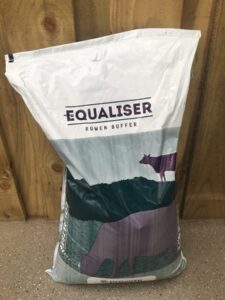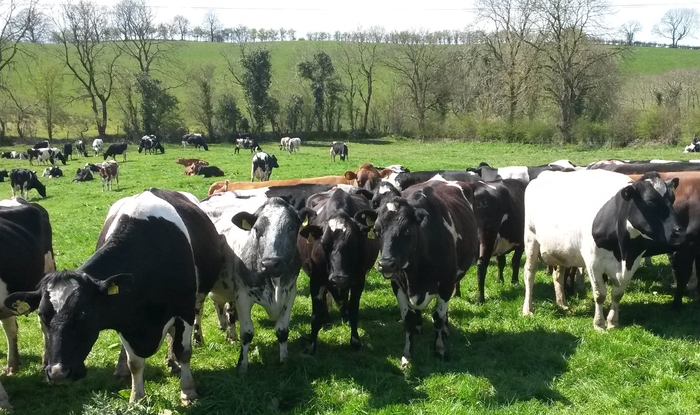Cargill has introduced a new specialist rumen buffer, Equaliser® Cream, to help improve milk fat production and reduce milk fat depression in dairy cows, particularly at turnout and into early summer.
It has a two-pronged approach. The tried-and-tested rumen buffer Equaliser helps maintain rumen pH. It has a buffering capacity more than double that of sodium bicarbonate and it is longer lasting. Equaliser Cream also includes a Diamond V rumen fermentation component, which reduces CLA production and ‘normalises’ the oil conversion pathways.
“A large proportion of dairy herds are affected by milk-fat depression at turnout and through the early grazing season,” says Cargill’s ruminant technology manager Philip Ingram.
 “Drops of 0.5% in milk fat are typical, and usually occur during the second and third grazing rotations – between three and nine weeks after turnout. An average reduction of 0.35% is often seen between April and August.”
“Drops of 0.5% in milk fat are typical, and usually occur during the second and third grazing rotations – between three and nine weeks after turnout. An average reduction of 0.35% is often seen between April and August.”
With most payment schemes based on milk solids, a drop in milk fat represents a significant reduction in milk income. This is estimated to be around 44p per cow per day in mid-season and an average of 30p per cow per day through the summer grazing season, based on an average yield of 26.5 litres a day and a typical contract returning +0.33ppl for each additional 0.1% of fat. Across 150 days, this is £4,500 drop in milk income for 100-cow herd.
Cargill has shown the success of this rumen buffer in two groups of cows in the same herd, where cows supplemented with the produced an extra 0.3% milk fat compared with the control group of cows.
“In one example, where cows experienced a drop of 0.5% in milk fat and levels stayed at or below 3.5% at grass and typically failed to recover during the grazing season, the addition of Equaliser Cream reversed the drop very quickly – in a matter of days – and brought levels back up to the 4% level,” says Dr Ingram.
“This herd also found increased diet digestibility, seen in more consistent manure and an elimination of undigested grains.”
Fed at a rate of between 100 and 150g/cow/day, Equaliser Cream represents a return on investment of 3.5:1.
Milk fat depression
While half of the milk fat is imported into the udder from dietary oil and the cow’s body reserves, the remaining 50% of milk fat is manufactured in the udder from the acids produced from forage and concentrate fermentation in the udder.
In spring and early summer, the high oil content in grass is 50% richer in unsaturated fats than a typical winter ration.
And, secondly, structural fibre in fresh grass is low, with sugar and highly digestible fibre high. This can cause a reduction in rumen pH, creating acidic conditions.
The greatest risk of reduced milk fat is where cows are grazing young, green leafy grass. This grass, typically seen in the second and third grazing rotations, has lower structural fibre so digests quicker and is higher in oil than more mature, later season grass.
“The combination of the acidic conditions and the high oil content in fresh grass creates a ‘perfect storm’ in the cow’s rumen and disrupts the normal pathways used by the cow to produce milk fat,” says Dr Ingram. “Under these conditions, dietary oil is converted to conjugated linoleic acid (CLA). This is an oil that disrupts the fat production pathways and causes a depression in milk fat.”
The high oil content of diets and the acidic rumen conditions created by the ration pose the two biggest risks associated with milk-fat depression.
“Equaliser Cream will help to mitigate the effects of milk-fat depression cost-effectively,” ads Dr Ingram. “But producers can also consider grazing and feed management techniques to help improve milk fat.
“Changes to grazing strategy and the stage of plant maturity at grazing, as well as altering the nutrient content of buffer or concentrate feeds, will all help. These three routes can all promote milk fat in the risk stages.”
This buffer has also been shown to promote milk-fat in housed herds. “It can reduce the risk of milk-fat depression where highly digestible diets are being fed, or where the silage has a high acid load, or where there is a high level of oil from distilled co-products,” adds Dr Ingram.
Equaliser Cream is a powder sold in 25kg bags and can be fed via a TMR, or added to blends or compounds.


